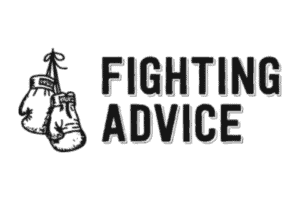For many martial artists, lousy eyesight can be a significant challenge. Seeing your opponent and the environment around you is essential to martial arts training. But, with the proper technique and attitude, even those with poor vision can still excel in their craft.
So how can you do martial arts if you have glasses? You can practice martial arts with bad eyesight if willing to adapt. Wearing soft or disposable contact lenses is an option since you can’t wear glasses during training. Adapting your technique to implement more grappling or defensive moves is also an option.
But there is much more you can do to help you practice martial arts safely if you have bad eyesight.
Multiple Ways To Do Martial Arts If You Have Glasses
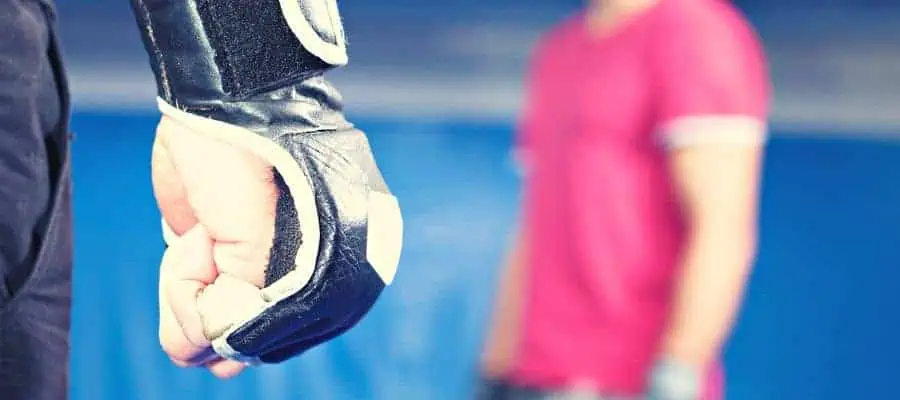
Practicing martial arts is a great way to stay physically fit, build strength, and learn self-defense. Unfortunately, some people with poor eyesight may be hesitant to try martial arts because they think their vision will prevent them from excelling. The truth is that someone with impaired vision can become an excellent martial artist if they take the proper precautions.
Contact Lenses
One of the most common solutions for those with bad eyesight is to wear contact lenses. Contact lenses are designed to correct vision problems. Problems such as short- or long-sightedness make it easier to see clearly during martial arts training.
They allow you to focus on your opponent and movements without straining your eyes. Suppose you decide that contact lenses are right for you. Then consult a qualified optometrist or ophthalmologist before selecting the best option for your needs.
Depending on where you live and compete, you may be permitted to wear contact lenses during your fight. However, you should check the rules of any competition before doing so. In some cases, contact lenses may be prohibited and can even result in disqualification.
You will likely be able to wear them; most regulations will prohibit you from putting them back in if they drop out during a fight.
Adapt Your Techniques And Strategies
One of the best ways to compensate for poor eyesight is to change your martial arts training approach. Since striking might be a problem for you, we recommend focusing on the grappling aspect of martial arts.
Grappling is a form of unarmed combat that emphasizes close-range fighting, throws, and submission holds. This can benefit you because it requires less accuracy than striking techniques. If you anticipate your opponent’s moves correctly, you can apply the proper technique even if your vision isn’t perfect.
If striking is something you still want to work on, focus on training at a slower pace and focus on accuracy over speed. With enough practice, you can become better in this area as well.
Practice Awareness
Being mindful of your movements and your opponents’ movements is essential if you have bad eyesight. Practicing mindful movement requires you to be aware of your body and the space around you. It also helps improve your ability to react quickly and accurately in any given situation.
Since perfect vision is optional for martial arts, the most crucial aspect is to stay aware of your opponent’s overall movements. Even if your eyesight is fuzzy, you will still see the shape of your opponent’s body and be able to tell which direction they are moving in. You will also notice if they are moving their arm or leg and be able to respond accordingly.
Improve What You Can
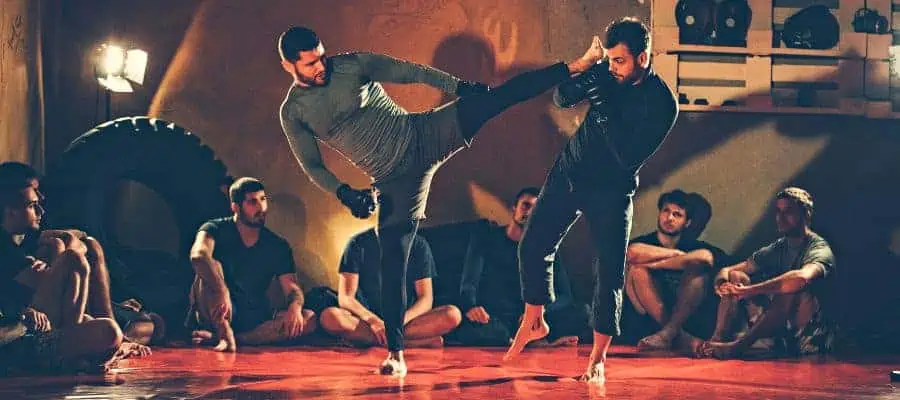
Train Timing And Distance
Timing and distance are two essential skills to master in martial arts. Lousy eyesight can force you to rely more on these two aspects of your training. Timing involves recognizing when to strike or defend yourself in any given situation, while distance is about understanding the optimal range for attacking and defending yourself.
Practicing these skills will help you develop the necessary reflexes to react quickly and accurately. With enough practice, you’ll be able to anticipate your opponent’s moves and respond appropriately.
Develop Strength And Endurance
Developing strength and endurance are fundamental for anyone practicing martial arts, regardless of their vision. Power is necessary because it increases your ability to apply techniques with more force and control. At the same time, endurance allows you to go the distance in any given match.
To build strength, focus on weight training exercises targeting major muscle groups. Practice cardio activities such as running, swimming, and cycling for endurance. This will help you master your martial arts techniques more effectively. Also, it will reduce the strain on your eyes during training sessions.
What To Do About Your Bad Eyesight?

The most essential step in improving your eyesight is getting regular checkups from an eye doctor. Eye doctors can diagnose eye problems early and recommend treatments to prevent further deterioration of your vision.
They may also recommend glasses or contact lenses if needed. In addition, eye doctors can advise on lifestyle changes that can help maintain good eyesight, such as eating a balanced diet and exercising regularly.
Another way to improve your eyesight is by doing special exercises specifically designed for the eyes. Vision exercises focus on strengthening the muscles around the eyes and increasing blood flow. This helps keep the eyes healthy and improves visual acuity over time.
Some activities include eye rolling, blinking, focusing on objects at different distances, and using light therapy to relax the eyes and reduce stress levels.
Finally, it is essential to protect your eyes from damage caused by UV radiation exposure or bright screens. Wearing sunglasses that block both UVA and UVB rays whenever outside is necessary for safeguarding the delicate structures inside our eyes from damage due to overexposure to sunlight.
Additionally, taking breaks when looking at screens for long periods will help reduce digital eyestrain caused by blue light exposure from screens like those found in computers and smartphones.
What Happens If You Get Hit In The Face With Contacts In?
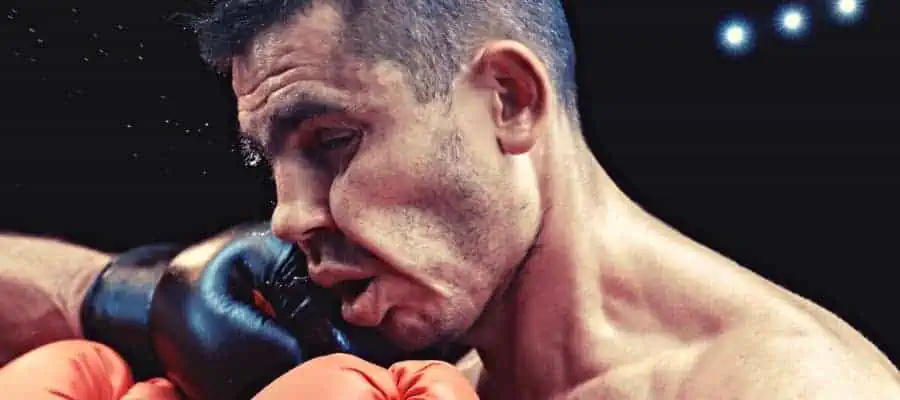
It’s not a pleasant thought, but it can happen: you get hit in the face with contacts. Since most contact lenses are made of soft and flexible material, it’s not uncommon for them to slip and move around when exposed to force.
However, this is also quite favorable since it is much less likely that the contact lens will break and cause the eyes to become scratched or cut. The chances of this happening with today’s contact lenses are almost impossible.
The most likely thing that will happen is that the contact lens that moves will cause discomfort or even blur your vision. In this case, you should take them out and put a new one in. But this is unrealistic during a fight, so you should manage the discomfort until the fight is finished. It’s also important that you visit your eye doctor as soon as possible afterward to ensure the lens hasn’t caused any damage to your eyes.
On the other hand, if you use hard contact lenses, a hit in the face can be much more dangerous. Hard contact lenses are designed to stay in place and not move as easily when exposed to force. As such, a hard contact lens may severely damage your eye by cutting or scratching it.
In this situation, you should consult an ophthalmologist immediately to ensure that your eye is safe and has not suffered any lasting damage. But it is best to avoid wearing hard contact lenses while sparring.
Do Any Pro Fighters Wear Contacts?
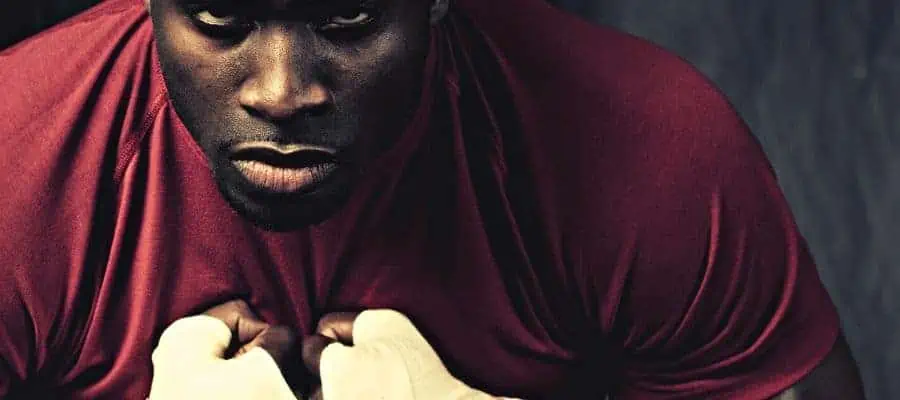
Quinton Jackson
The first example of a professional fighter wearing contact lenses while competing is Quinton Jackson, better known as “Rampage.” Rampage wore contacts during his time in the UFC and Bellator while fighting for both organizations.
Karo Parisian
Karo Parisian is another famous name in MMA who wears contact lenses while competing. Karo began wearing them after suffering a severe eye injury at UFC 63 that caused blurred vision in one eye and impaired vision in the other.
Juan Adams
Juan Adams is a UFC heavyweight fighter who also wears contact lenses while competing. Juan had to compete in a few fights without them, practically fighting blind in some cases, before the UFC approved his request to wear contact lenses.
These are just a few of the many professional fighters who have found success in their careers while wearing contact lenses.
Fighters With Bad Eyesight
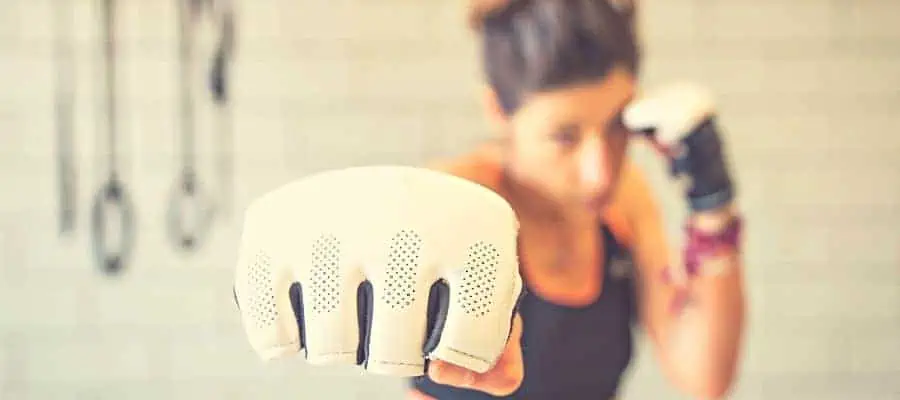
Charles Oliviera
Charles Oliviera was born with severe vision problems. He wore glasses at a very young age, but he never let his vision problems stop him from pursuing his dreams. As a child, he was an avid fighter and athlete, taking part in jiu-jitsu classes despite his poor vision. His dedication paid off, and he became one of the top MMA fighters in Brazil before moving to the United States to compete on the UFC circuit.
Oliviera has become one of the most successful fighters in UFC history, becoming one of the best lightweights in the world. In an interview, Oliviera said that his vision is so bad he sees three opponents instead of one in the octagon. Still, he never let his eyesight stand in the way of success.
Michael Bisping
Michael Bisping suffered a severe injury by TRT Belfort in the UFC, which caused him to be blind in one eye. The damage was so severe he had to have the eye removed and get a fake one implanted. Despite losing his vision, Bisping never lost hope and continued pursuing an MMA career.
Bisping became one of the most successful fighters in UFC history, becoming one of the greatest middleweights ever. Some people didn’t believe he had one eye because his fighting skills didn’t worsen after his injury. To prove a point, in an interview, Bisping took his fake eye out to show everyone that he was still fighting despite having no vision in one eye.
Justin Gaethje
A force to be recognized within the octagon, Justin Gaethje is a dangerous lightweight fighter who had poor vision. He is quoted saying: “I used to be blind. I had a horrible vision. I was 20/60 in one eye and 20/200 in another eye”. Despite having poor vision, Gaethje never let this impede his performance, and he became one of the most feared lightweights in the UFC.
In 2016 Gaethje underwent photorefractive keratectomy (PRK) eye surgery. So it successfully improved his vision enough to allow him to fight without restrictions. He has since become one of the most successful fighters in the UFC, becoming a fan favorite.
These are just a few examples of professional fighters who have overcome their poor vision and achieved great success in the octagon. They inspire anyone struggling with poor vision, showing that anything is possible if you put your mind and body into it.
Best Contact Lenses For Martial Arts
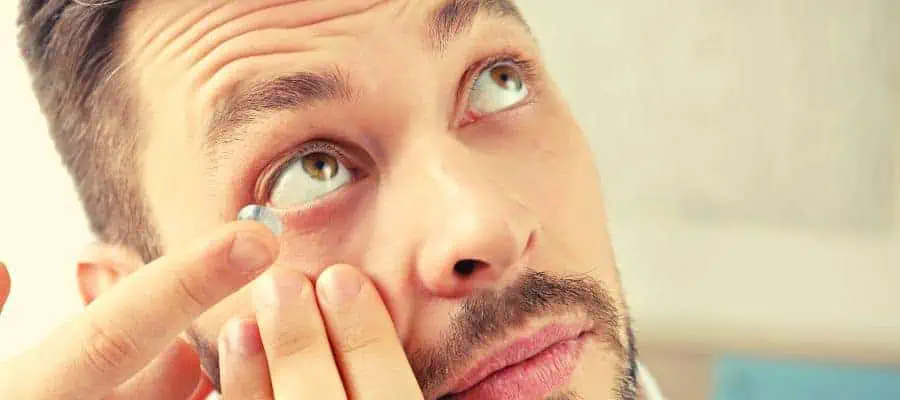
Soft Contact Lenses
Soft contact lenses are the most popular type of contacts because they provide comfort and convenience. They are made of soft, flexible material that conforms to the shape of your eye and allows oxygen to pass through. Soft contacts come in various prescriptions, including single-vision, bifocal, and progressive lenses.
One advantage of soft contact lenses is that they can be worn safely while participating in sports like martial arts. It is because they don’t require special care or maintenance during wear. They also come in disposable options with different wearing schedules (e.g., daily disposables).
Daily Disposable Contact Lenses
Daily disposable contact lenses are great for people who participate in sports such as martial arts. It is because they don’t require any cleaning or care during wear and are disposed of after each use. This makes them ideal for those who may not have time to clean their contacts after each use but still want a clear vision while training or competing in martial arts.
Daily disposables also provide superior comfort compared to other types of contacts due to their thin design and high water content. It keeps eyes hydrated throughout wear. Plus, they offer excellent hygiene since you replace them every day, so there is no chance for bacteria or debris buildup on your lens surface!
Orthokeratology Contact Lenses
Orthokeratology (or Ortho-K) contact lenses are designed specifically for athletes who want clear vision without wearing glasses or soft contacts during training or competition. Ortho-K lenses work by reshaping the cornea with gentle pressure. It allows light rays entering the eye to focus correctly on the retina without having to wear corrective eyewear all day long!
So these lenses allow for clear vision without wearing glasses or traditional soft contacts during activity. Also, they provide an excellent option for athletes who need sharp eyes while competing in martial arts but don’t want their vision impaired by glasses or regular contact lenses while training.
Additionally, Ortho-K can reduce nighttime glare commonly experienced by those wearing glasses while driving at night. So this makes them an ideal choice for athletes who train late at night.
Conclusion
As you can see, you can still practice martial arts, even if your vision isn’t perfect. There are a variety of contact lenses on the market that can provide the clear vision you need to perform your best without compromising safety or comfort.
Whether you opt for soft contacts, daily disposables, or orthokeratology lenses, there is an option that will help you achieve the optimal vision while participating. There have been plenty of professional martial artists who have achieved great success while struggling with their eyesight.
Recent Posts
What is Manachai's Fighting Style? Unveiling Muay Thai Mastery
Manachai, a celebrated figure in the Muay Thai world, has captivated audiences with his exemplary martial prowess. Hailing from the heartlands of Thailand, his name is synonymous with the art of...
What Was Chamuekpet Hapalang's Fighting Style? Unveiling Techniques
Chamuekpet Hapalang was a renowned figure in the world of Muay Thai (record 200-48-2), embodying a fusion of Muay Bouk and Muay Khao styles. Originating from Thailand, the art of Muay Thai is known...
